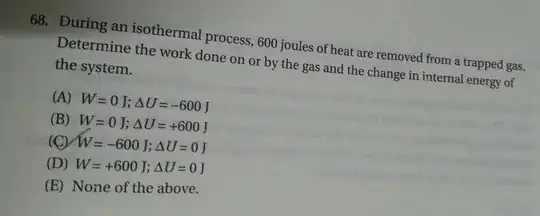
The question asks work for done by or on the gas. How does that make sense? If I do work $mgh$ on a block by raising it, the work done by the block on me is $-mgh$. They have the same magnitude and opposite sign.
In physics we use the sign convention of ∆W=P∆V for work done BY gas. So if it expansion it is Positive and vice versa. However in chemistry we use ∆W=-P∆V for work done by gas and expansion is negative. I understand that overall the sign convention give same answer for ∆U and ∆Q as one has Q=U+W whereas other one is U=Q+W. But doesn't this mean work done according to your sign convention will change?
The correct answer is supposed to be D.